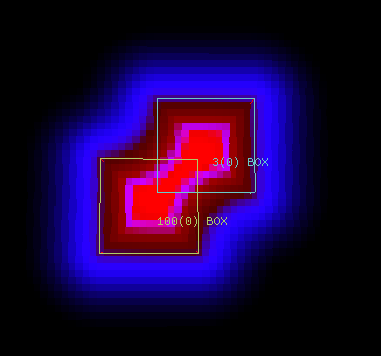For a project of mine, I want to implement a form of lighting in which individual lights merge into blobby masses of light. The trick is that I don't want their intensities to accumulate: I want them to fade into each other instead.
However, I'm finding myself stuck on how to do so, and hence come here in the hopes that someone will have some aid to give!
So, consider two simple, fuzzy lights. (For the sake of simplicity I'm using approximations created in an image-editor; they're not quite the same as my actual lights, but they should hopefully serve for illustrative purposes.)
Thus far I've been combining my lights by taking the maximum value at a given point. This prevents accumulation--but doesn't look great:
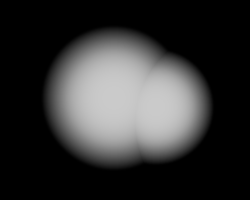
Simple addition, however, naturally produces accumulation:
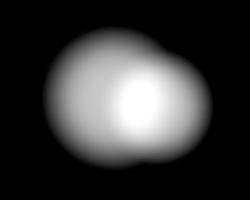
What I'm hoping for instead is something like the following--merged, soft, and non-accumulating:
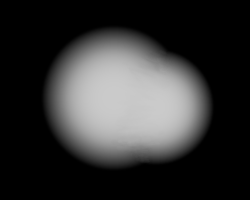
Now, the “metaball” approach produces a promising silhouette--but only in silhouette.
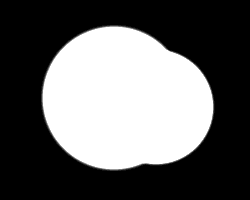
And thus far all attempts--of which I've made a number at this point--at finding a way to shade the “metaball” approach using light-intensities have failed. In particular, I had a shot at producing intensities via weighted average--but either I was mistaken in my approach or it didn't work as I'd hoped.
So, all that said, does anyone here have any suggestions?





